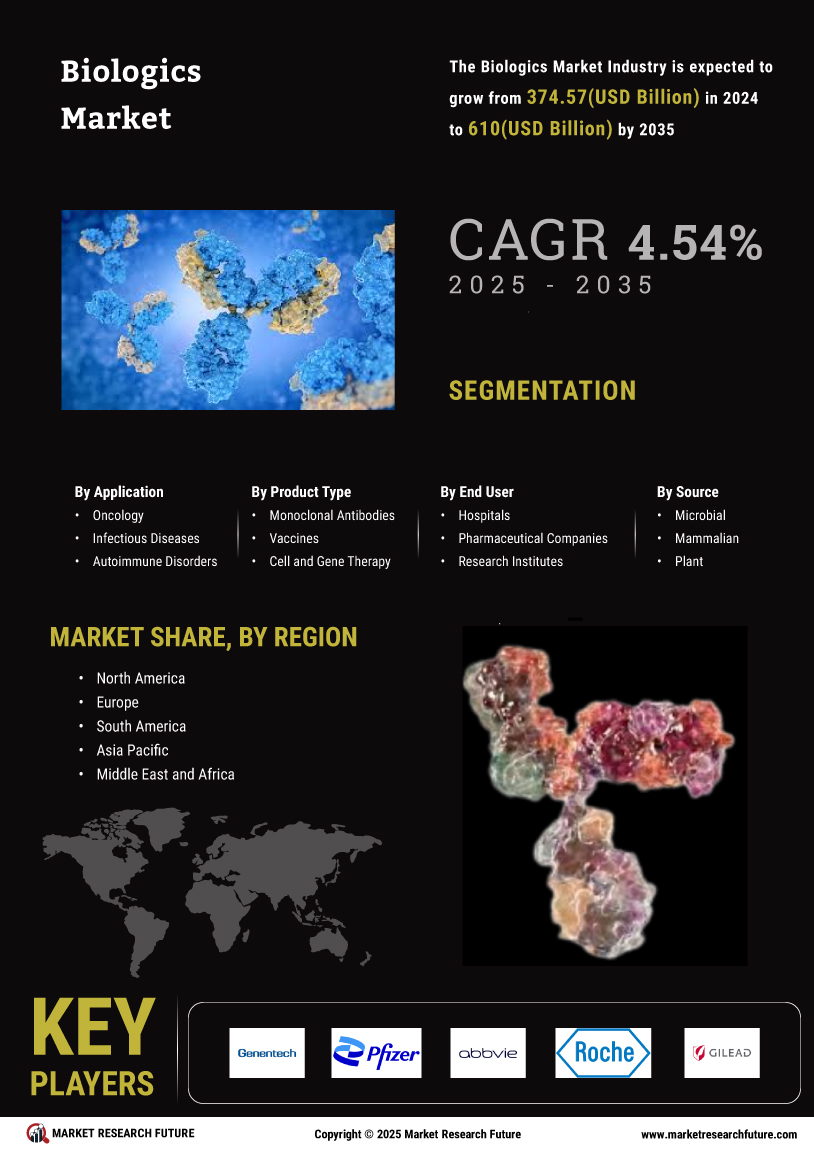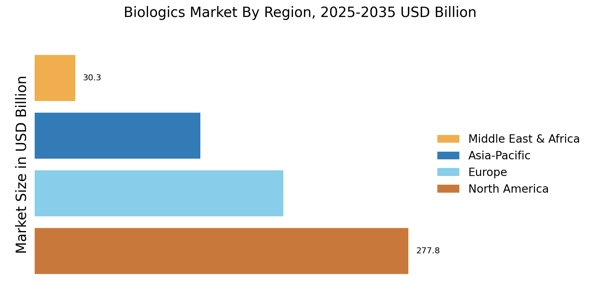Advancements in Biotechnology
Technological innovations in biotechnology are significantly influencing the Biologics Market. The development of novel bioprocessing techniques and advanced analytical methods has enhanced the efficiency and effectiveness of biologic drug production. For instance, the introduction of continuous manufacturing processes has the potential to reduce production costs and time, thereby making biologics more accessible. Furthermore, advancements in gene editing technologies, such as CRISPR, are paving the way for the creation of more precise biologic therapies. This evolution in biotechnology not only supports the growth of the Biologics Market but also encourages investment in research and development, as companies seek to capitalize on these emerging technologies.
Regulatory Support for Biologics
Regulatory agencies are increasingly recognizing the importance of biologics in modern medicine, which appears to be fostering a more favorable environment for the Biologics Market. Streamlined approval processes and guidelines for biosimilars are encouraging manufacturers to invest in biologic drug development. For example, the introduction of the Biosimilar User Fee Act has facilitated the review and approval of biosimilars, thereby expanding treatment options for patients. This regulatory support is likely to enhance competition within the Biologics Market, leading to lower prices and improved access to biologic therapies. As regulations continue to evolve, the market may witness a surge in the introduction of innovative biologic products.
Rising Demand for Targeted Therapies
The increasing demand for targeted therapies is driving growth in the Biologics Market. Patients and healthcare providers are seeking more effective treatment options that minimize side effects and improve therapeutic outcomes. Biologics Market, which are designed to target specific pathways and mechanisms of disease, are well-positioned to meet this demand. Market analysis indicates that the targeted therapy segment is expected to grow significantly, with biologics playing a central role in this expansion. This shift towards personalized medicine is likely to enhance the appeal of biologics, as they offer tailored treatment solutions. Consequently, the Biologics Market is poised for continued growth as the focus on targeted therapies intensifies.
Increasing Prevalence of Chronic Diseases
The rising incidence of chronic diseases such as diabetes, cancer, and autoimmune disorders appears to be a primary driver for the Biologics Market. As these conditions become more prevalent, the demand for biologic therapies, which offer targeted treatment options, is likely to increase. According to recent data, biologics accounted for approximately 40% of the total pharmaceutical market, reflecting their growing importance in disease management. This trend suggests that healthcare providers are increasingly turning to biologics as a viable alternative to traditional therapies, thereby propelling the market forward. The Biologics Market is expected to continue expanding as more innovative biologic drugs are developed to address these chronic conditions, potentially improving patient outcomes and quality of life.
Growing Investment in Biopharmaceutical Research
The increasing investment in biopharmaceutical research and development is a crucial driver for the Biologics Market. Pharmaceutical companies are allocating substantial resources to discover and develop new biologic therapies, reflecting a shift in focus towards biologics as a key component of their portfolios. Recent statistics indicate that biopharmaceutical R&D spending has reached unprecedented levels, with billions of dollars being invested annually. This trend suggests that the industry is prioritizing biologics due to their potential for high returns and the ability to address unmet medical needs. As investment continues to flow into the Biologics Market, it is likely to stimulate innovation and accelerate the development of new therapies.


















Leave a Comment